

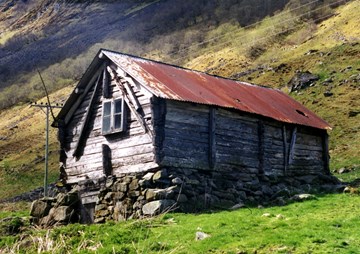
The farms of Undredal and Hjøllo are located close together on the western side of the Aurlandsfjord, about five kilometres south of the entrance to the Nærøyfjord. Hjøllo is located on a terrace about 100 metres above sea level to the east of the river Undredalselva. About 1900 there were 14 holdings on these farms, and the cultivated fields were only about 125 acres. Consequently, the outlying fields and the mountain farms played an important part in the farm economy.
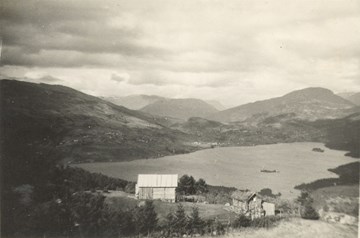
Steigastølen, which is located straight under the Ølnesstølen mountain farm and close to Bergastølen, used to be the summer mountain farm for the farm called Steig. At the mountain farm the milk was separated and churned, and the skimmed milk was given to the calves. Lars Steig cultivated about two acres near the mountain farm. He cut the hay and later transported the hay down to the main farm in wintertime. The mountain farm was in use until 1979. The two buildings still remain and are now used as cabins.
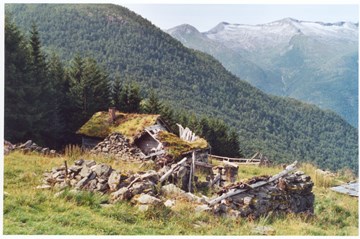
The isolated farm of Lidal is situated down towards the sea on the east side of the Fjærlandsfjord. A narrow and steep valley leads up to the more open north-south valley of Breisetedalen. Previously there were five farms which had had mountain farms from days of old. 1965 was the last year there was any activity at Røysete, the main mountain farm, also known as "heimestølen" (the home mountain farm). Bjørg Lidal Skeide was one of the last milkmaids.
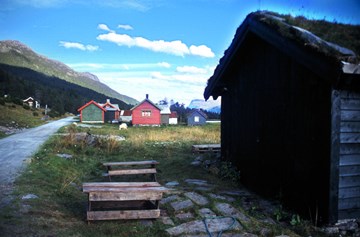
On the road between Ålfoten and Svelgen is the valley of Myklebustdalen with the mountain farm of Myklebustsætra located close to the lake of Sætravatnet. This is one of the few mountain farms in the county of Sogn og Fjordane still in use.
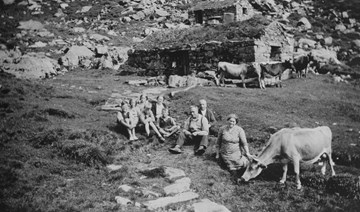
Until the 1920s, the villages of Allmenningen and Eldevika had a common mountain farm in Skogadalen in the former municipality of Davik. In the 1920s, the holdings at Eldevik built their own mountain farms further down in the vicinity of the lake of Sætrevatnet. Allmenningen had a spring and autumn cowshed at Branden. There was no place where they could stay overnight so they had to return home in the evenings. At Skogadalen they stayed overnight at the mountain farm, but they returned home during the day to take part in the work at the farm. It took from one to two hours to walk from the farm up to the mountain farm.
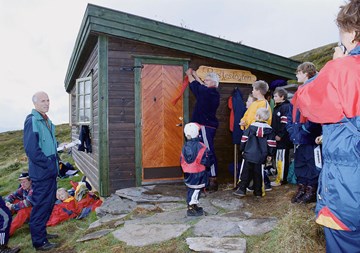
Rystestøylen is an old mountain farm for the farms at Raudeberg. There could be as many as 40 cows there in the summer. Girls from the farms took care of the milking, and had to hike up every evening and morning six days a week. They took Sundays off because then their parents took over the milking chores. About 1950, the operation of the mountain farm came to an end. In 1946, a new "gardfjøs" (literally: farm cow shed) was built at Rystestøylen. When the operation of the mountain farm ended in 1950, the house was no longer maintained properly and decay set in. In 1999, the house was rebuilt on the initiative of the foundation called Rystestøylen. People wanted it to be a monument to the work at the mountain farm and in the mountains.